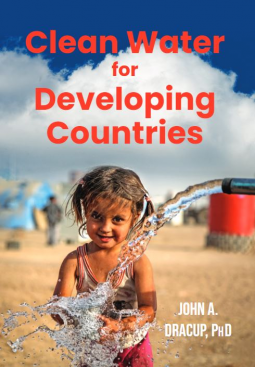
Clean Water for Developing Countries
by John A. Dracup, PhD
This title was previously available on NetGalley and is now archived.
Send NetGalley books directly to your Kindle or Kindle app
1
To read on a Kindle or Kindle app, please add kindle@netgalley.com as an approved email address to receive files in your Amazon account. Click here for step-by-step instructions.
2
Also find your Kindle email address within your Amazon account, and enter it here.
Pub Date Jan 08 2020 | Archive Date Jul 23 2020
Talking about this book? Use #CleanWaterforDevelopingCountries #NetGalley. More hashtag tips!
Description
Clean Water for Developing Countries is designed to assist the reader in choosing the best method for providing clean and safe water in a developing country. Most of the book’s content comes from the author’s knowledge gained from:
-Fifty-plus years of research and teaching in water resource engineering, hydrology and clean water for developing countries at both the University of California, Los Angeles, and the University of California, Berkeley.
-Thirty-five years as an expert witness on numerous hydrologic and water resource engineering legal cases.
-Clean water projects he was involved with in Kenya, Peru, Honduras and Guatemala between 2011 and 2017.
-Attendance at various courses including ones at the Centre for Affordable Water & Sanitation Technologies (CAWST) in Calgary, Alberta, Canada and at “Potters for Peace” in Dodgeville, Wisconsin.
-His many colleagues and students.
The sites needing clean water can be diverse, e.g. an individual household, an entire village, a group of villages, a school, a clinic, an orphanage, etc. The focus of this book is to provide the reader with a basic understanding of how to bring clean water supplies to these entities. The optimal approaches will depend on both the Point of Use (POU), which may be large or small, and the state of the water (quantity, turbidity, type and concentration of pathogens/bacteria/viruses present) at the water source. Point of Use (POU) is the location where the water is to be consumed.
The majority of those impacted by unsafe water live in isolated rural areas of the developing world. Cost, sustainability, cultural differences and acceptance by those who will use the water are all important factors in providing clean drinking water to these people.
These factors include:
-Community Involvement. By far, the most successful water enhancements in developing countries are tied to community organizations, particularly among the female population.
-The Source of Water. It could be from groundwater, rainwater harvesting or surface water, such as springs, creeks, rivers, lakes and reservoirs.
-The Quality of the Source Water. The water may have physical, biological and/or chemical pollution.
The Size of the Demand Population. Is it an individual household, a school, an orphanage, a small or large village, or a group of villages? Obviously, this affects the amount/volume of clean water needed, and this affects the methodology to be used.
-The location of the population to be served. Are they close together or widely dispersed?
This book is a great supplement for educators as well as a guide for people, groups, and organizations interested in bringing clean water to the areas that need it most.
Available Editions
| EDITION | Paperback |
| ISBN | 9781734352405 |
| PRICE | $28.95 (USD) |
Links
Average rating from 4 members
Readers who liked this book also liked:
John Kotter; Holger Rathgeber
Business, Leadership, Finance, Nonfiction (Adult)











